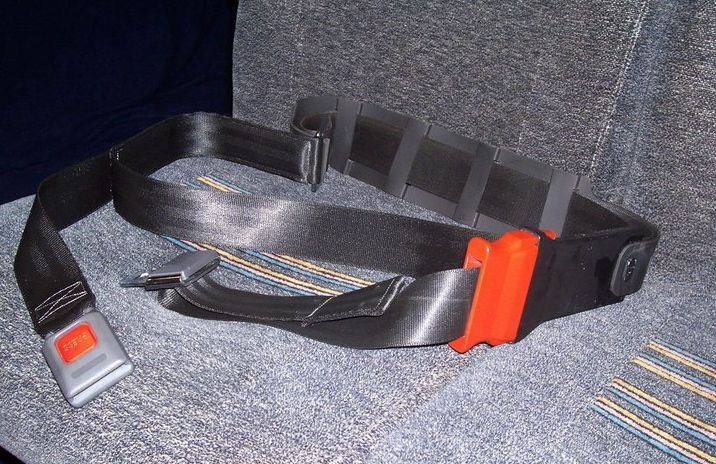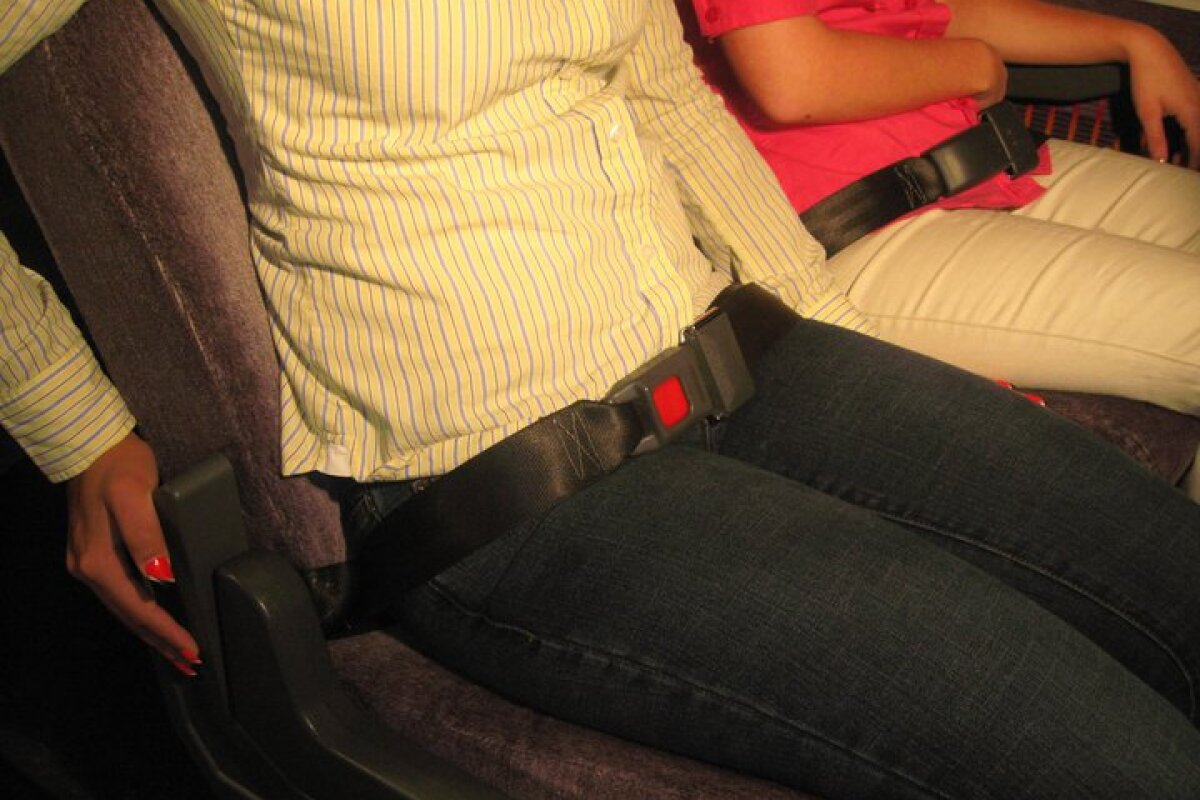Given how diligent most of us are about putting on our seatbelt when we get in a car, it seems funny that we think nothing of riding on highway-going buses that don’t even even have seat belts. While it’s possible that coach manufacturers may be required to install safety restraints on new buses in the future, that will still leave a lot of belt-less older buses on the road and in use. That’s why Blake McCauley and Charles Bedell have created the SafeHarness portable seat belt.
The SafeHarness is a lap belt setup that slides down over the seat back from the top, then is cinched in place at the bottom. One loop of webbing holds the belt to the seat, while the belt itself goes around the passenger’s waist – so no, it’s not just all one loop that goes across the wearer’s waist in the front, and around the seat back in the rear.
The device has been subjected to lab tests, and reportedly meets Federal Motor Vehicle Safety Standards.

Instead of passengers supplying their own SafeHarnesses, the idea is more that bus lines would purchase them in bulk and install them in all their coaches. This would presumably be much easier and less expensive than installing permanent seat belts, and wouldn’t require any changes to be made to the existing seats. That said, individuals could also buy them for their own use.
McCauley is a retired firefighter, and Bedell runs an auto recycling business. Both of them have seen the aftermath of accidents where seat belts could have saved lives, which is what prompted them to begin work on the SafeHarness approximately four years ago. They’re now attempting to raise production funds for their invention on Indiegogo, with a pledge of US$60 getting you a SafeHarness of your own, when and if they reach production. More information is available in the pitch video below.
Blake and Charles aren’t the only people working on a portable seat belt for buses, as it turns out. The Sara’s Wish Foundation is also developing one in memory of Sara Christie Schewe, a university student who was killed when the bus that was traveling on in India overturned.
Sources: SafeHarness, Indiegogo





